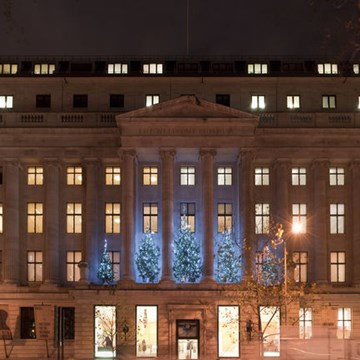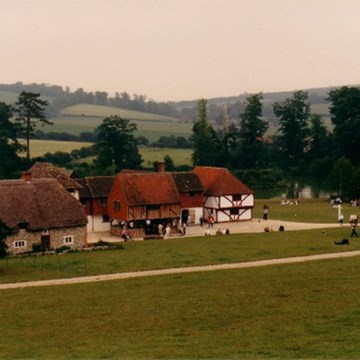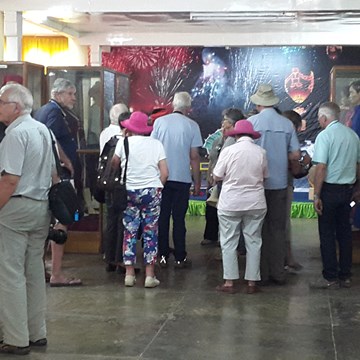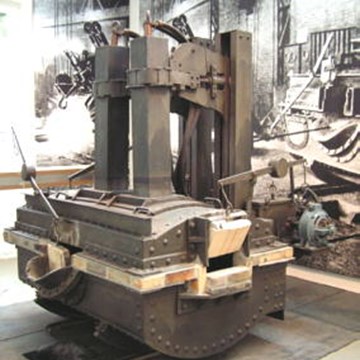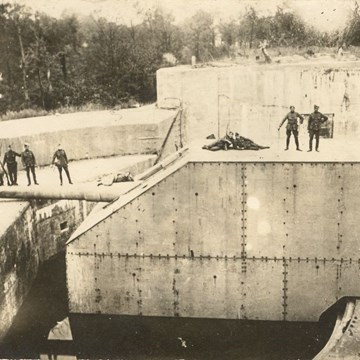Palacio de la Magdalena
The Palace of La Magdalena is the most emblematic building of the city of Santander and one of the most prominent examples of civil architecture in northern Spain. With a majestic landscape, it is situated at the highest point of the Peninsula bearing the same name. Its construction, between 1908 and 1912, following the plans of Gonzalo Bringas and Javier González de Riancho, resulted from a municipal initiative: the Town Council wanted to present Kings Alfonso XIII and Victoria Eugenia with a summer residence to consolidate the summer tradition that was taking root in the city and its province. The monarchs and their children spent their summers between 1913 and 1930 in Cantabria. Apparently, it was the Queen, called Ena in the privacy of her family, who especially enjoyed the landscape and the architecture, very close to those of her native England: writers and poets evoked her homesickness for the Isle of Wight and they actually associated it with her stay in Santander and her subsequent exile.
From the SecondSpanishRepublic, the Palace was given various uses that damaged its status, both internal and external: it was the headquarters for the SummerInternationalUniversity, a hospital, temporary residence for those affected by the fire of 1941… From this year it was owned, together with the Peninsula, by Don Juan, son of Alfonso XIII and count of Barcelona. In 1977 the Town Council purchased this property, which can be enjoyed by every citizen since then. The brilliant total restoration of the main buildings of La Magdalena ended in 1995. Today, the Palace is the venue for congresses and meetings; during the summer, the Town Council allows the MenéndezPelayoInternationalUniversity to use it as its centre of activity. Among its attractions, the Palace boasts an interesting museum area which can be visited and which offers a significant part of the royal heritage in connection with the city of Santander
The Palace of La Magdalena has had a truly intense history, which reflects the social and political situation in Spain. Eight decades of busy existence, from Royal Residence to municipal property and headquarters for the InternationalUniversity, made absolutely essential its restoration, completed in 1995. Currently, the Palace is a place that offers different alternatives for hosting conferences and meetings, and it also preserves a museum area recreating the charm of the former Royal Residence.
When the architectural design contest was presented at the end of 1907, there were finally eight submissions. The Kings saw the designs in San Sebastián, on September 17, 1908. They were signed by Eladio Laredo (three designs), Valentín Ramón Lavín Casalís, Casimiro Pérez de la Riva, Emilio de la Torriente and, jointly, Gonzalo Bringas Vega (1880-1943) and Javier González de Riancho (1881-1953). Another project was that of Ralph Selden Wornum (1881-1953), dated July 25 of that year under the title “Résidence Royale à Santander”. Wornum, disciple of William Burges, was the author of several works in Biarritz, Saint-Jean-de-Luz and Gibraltar before signing two designs closely linked to the Royal Family: the Royal Country House of Miramar, in San Sebastián, for Queen Regent María Cristina (1893), and the Country House of Los Hornillos in Las Fraguas (Cantabria) for the Duke of Santo Mauro (1904).
Furthermore, the design of Bringas and Riancho, two young Cantabrian men who had just graduated from the School of Architecture of Madrid, was more exuberant than that of Wornum. In fact, they called it from the beginning “RoyalPalace”, fitting perfectly with the idea of local promoters, who were going to generously donate the entire Peninsulaof La Magdalenato the Kings. La Voz de Cantabria newspaper of September 23, 1908, described the winning design as follows: “The Palace has an English style, highlighted and adorned with projections, balconies, terrace roofs and other modifications in the pure style, not possible in the English country but perfectly adaptable to our land”.
Construction of the Palace
In 1904 the Town Council had recovered from the State (being Antonio Maura the president of the Spanish government), under usufruct, the grounds of thePeninsulaofLa Magdalena. Both the administrative management for the acquisition of the land and the cession to the King were carried out with the utmost discretion. On April 23, 1908, the King accepted the offer from the Town Council made by its mayor, Luis Martínez. A committee was appointed to manage the popular subscription that would support the project economically, whose initial sum amounted to half a million pesetas. On August 7, 1908, the King visited the site where the Palace was planned to be built: he was who decided to locate it at the highest point of thePeninsula. The following month the design by Bringas and Riancho was elected. At the end of 1908 the Queen, taking advice from Wornum himself, introduced some changes to the initial plan, which affected mainly the distribution of some rooms (the Kings’ Room, for example, was moved from the ground floor to the main floor) and the fact that the chapel was going to be built in an independent building, designed by Bringas and Riancho in 1909 but not erected in the end.
The construction of the building, commissioned to contractor Daniel Sierra, was put up for auction in January 1909. The works started in March with a budget of 700,000 pesetas. The financing was expected to be obtained by popular subscription: it was Ramón Pelayo de la Torriente, Spaniard who made his fortune – one of the largest of the time – in America and future Marquis of Valdecilla, who paid for a significant part of the expenses.
The levelling of the land took up an area of 100 x55 m. The description of the plan summed up in these words: “Masonry from Cueto with slate roof. Rectangular ground plan (91 metreslong and21 metreswide). Projecting body facing North of 20 metres per side”. The work featured four levels: basement, ground floor, main floor, attic and loft. The large base eliminated the characteristic contact between typical interior and exterior spaces of Victorian-style houses with garden. The exterior of the Palace was finished in the summer of 1911.
With regard to furniture, the Kings first saw the detailed map of the interior on November 24, 1910, when Bringas and Riancho showed it to them in the country house of the Duke of Santo Mauro in Las Fraguas (Cantabria). The monarchs volunteered to send at their own expense the Spanish-style furniture of The Palace of El Pardo and the English-style furniture made by Casa Mapey of Bilbao. The Duke of Santo Mauro was in charge of the design and decoration works, which brought together different specialists following the “Album of interior designs’ by W. Freeborn. Although she did not visit La Magdalena until September 1912, the Queen closely followed the evolution of the works, giving precise directions especially with regard to furniture which, according to her daughter, Infanta Doña Cristina, was entirely arranged to her taste
On May 6, 1912, the Ministry of War definitely gave the Town Council of Santander the grounds and buildings of La Magdalena. On September 4, 1912, the Queen entered her Palace for the first time; the solemn handover of the key of the Palace to Alfonso XIII took place on the 7th day. On this key appeared engraved the coat of arms of Santander and the initials of the Royal couple: “AB” and “VB”. On August 4, 1913, the Kings and the Infantes started to spend their summers in Santander, continuously until year 1930.
Royal Residence
La Magdalena was the summer residence of Alfonso XIII at a crucial time for the contemporary history of Spain, between 1913 and 1930.
The Palace was furnished every summer, so most of the furniture was not stable. Many pieces were brought in spring and often changed their location. Despite its noble style, the Palace facilitated the meeting of Royal Family members, much more than the palaces in which they lived the rest of the year. Here, they spent more time together, even taking the public and private commitments of the King into account.
Headquarters of the International University
With the establishment of the SecondSpanishRepublic, the new Government seized the estate of the Royal House, such as the Palace and the Peninsula. This fact did not give rise to polemic given that, after all, these goods were a particular property that the King received as a donation from the city of Santander. During the autumn of 1934, Queen Victoria Eugenia asked the Republican Government, through the British Embassy in Madrid, to send some of the furniture of the Palace to her new residence in London.
On August 23, 1932, Fernando de los Ríos, Minister of Public Instruction and Fine Arts, signed the founding decree of the Summer International University of Santander. On January 30, 1933, the Palace of La Magdalena was officially given to the Board of Trustees of the new University, which had Ramón Menéndez Pidal (1933) and Blas Cabrera (1934-1936) as its vice-chancellors.
The International University, refounded in 1946 as “Menéndez Pelayo International University”, made use of some of the facilities of the Peninsula, such as the Stables (or the “Residence of the Beach”) and the Auditorium, headquarters shared from 1953 with Las Llamas, in the northern area of Santander. Since 1951, these places hosted poetry readings, musical performances, courses and art exhibitions. On August 2, 1953, the canteen of the Spanish University Union was set up in the ground floor of the Stables. The new Auditorium was inaugurated on August 1, 1954, and a few days later, on August 21, an agreement was signed so that the UIMP could partly use the Palace, whose partial restoration had finished that same year.
Municipal property
In 1977 the Town Council of Santander reached an agreement with Don Juan de Borbón, Count of Barcelona, with the aim of recovering the Peninsula for the city. In 1982 the Palace was declared Historic-ArtisticMonument at a National Level. In these years, however, the deterioration of the Palace, the Stables and the Auditorium was very noticeable. Thus, the Town Council definitively undertook a comprehensive restoration of these spaces in the first half of the 1990s. The alteration and modernisation works culminated in its inauguration by the Kings, Don Juan Carlos and Doña Sofia, on June 14, 1995.
Restorations and refurbishments
When on June 14, 1995, the Kings inaugurated the refurbishment works of the Palace, directed by Luis de la Fuente Salvador, its facilities had undergone a truly admirable change, although the project stuck as much as possible to the original designed by Bringas and Riancho.
The restoration of the 1990s pursued and achieved three essential goals: to recover the luminosity, to reorder the uses scattered throughout the building and to connect it with its surroundings. For the facilities that today coincide with the museum area, the criterion followed was eminently restoring, with the aim of recreating the historical period of regal summers. In other places it was the refurbishing criterion the one that prevailed, and, thereby, some spaces were modified according to new needs. Among the main proceedings, a basement level and the new central staircase were built.
Current uses of the Palace
The Palace is nowadays an atypical Convention and Meeting Centre. It hosts meetings of various kinds, including civil weddings. Thanks to an agreement with the Town Council, the UIMP uses the Palace from June to September. All the rooms dedicated to conferences or congresses (Royal Hall, Gala Dining Hall, Dance Hall, Riancho Room, Bringas Room, Audience Rooms, Infantes’ Hall, Library Room and Duke Santo Mauro Room) have a voice and data circuit. Moreover, in most of them there is a closed television circuit, air-conditioning and simultaneous translation booths.
Among other unique events, the Palace has been the scene for meetings of Labour and Foreign Affairs Ministers of the European Union during the Spanish Presidency (1995), the British-Spanish Gatherings (1996), the French-Spanish Summit (1999), the summit of Tourism Ministers of the European Union (2002) and a meeting of the Spanish National Research Council (Consejo Superior de Investigaciones Científicas) chaired by H.R.H. Don Felipe de Borbón (2002). The Palace receives, by appointment, tourist visits to the museum area.
Exhibitions and events
We don't have anything to show you here.
Educational programs
We don't have anything to show you here.
Collections
We don't have anything to show you here.







